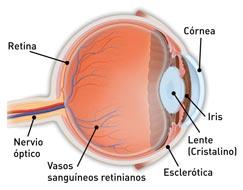Short Vision: What is Myopia?
 Myopia is a refractive error, which means that the eye does not refract light properly in order for you to see the images clearly. When there is myopia, nearby objects are clearly visible, but distant objects are blurred. Myopia is a common condition that affects 25 percent of Americans. This is an eye disorder related to the approach, not an eye disease.
Myopia is a refractive error, which means that the eye does not refract light properly in order for you to see the images clearly. When there is myopia, nearby objects are clearly visible, but distant objects are blurred. Myopia is a common condition that affects 25 percent of Americans. This is an eye disorder related to the approach, not an eye disease.
Myopia in Children
Myopia is inherited and is often discovered in children when they are between eight and 12 years old. During the teenage years, when the body grows rapidly, myopia can worsen. Between the ages of 20 and 40, there are usually few changes. Myopia can also occur in adults.
High Myopia
A mild myopia is called low myopia. Severe nearsightedness is called high myopia. A high myopia usually stabilizes between 20 and 30 years of age. A high myopia can usually be corrected easily with glasses, contact lenses or sometimes with refractive surgery.
Patients with myopia have an increased risk of developing a retinal detachment. Your eye doctor will discuss with you what are the warning signs of a retinal detachment, and if you are in a high risk category. If the retina detaches and is discovered in time, a surgical procedure can usually repair it. It is important to undergo regular eye exams performed by an ophthalmologist so that changes in the retina leading to risk of retinal detachment can be observed and treated.
People with high myopia may also have a higher risk of developing glaucoma and cataracts.
Short Vision: Causes of Myopia
Written by: Kierstan Boyd Reviewed by: Denise Satterfield MD Sep. 01, 2013
To make it possible for our eyes to see, the rays of light must be bent or refracted by the cornea and lens so that they can be focused on the retina, the layer of photosensitive cells that lines the back of the eye. The retina receives the image formed by the rays of light and sends it to the brain through the optic nerve.
Myopia occurs when the eye is longer than normal or has a cornea (the transparent front window of the eye) that is too curved. As a result, the rays of light are focused at a point in front of the retina, rather than directly on its surface. This allows you to clearly see nearby objects, but distant objects are blurred.
Short Vision: Symptoms of Myopia
Written by: Kierstan Boyd Reviewed by: Denise Satterfield MD Sep. 01, 2013
Some signs and symptoms of myopia include visual fatigue, headaches, squinting to see well and difficulty seeing distant objects such as traffic signs or a blackboard at school.
Symptoms of myopia may be evident in children between the ages of eight and 12 years old. During the teenage years, when the body grows rapidly, myopia can worsen. At ages between 20 and 40 years old, there are usually few changes.
Short Vision: Diagnosis of Myopia
Written by: Kierstan Boyd Reviewed by: Denise Satterfield MD Sep. 01, 2013
Your eye doctor can diagnose myopia during a complete eye examination. He or she will determine if you have myopia through a standard vision examination, where you are asked to read the letters in a box placed at the other end of the room.
If the test shows that you are myopic, your doctor will use certain devices during the test to find out what causes myopia. By placing the glow of a special light in your eyes, a retinoscope is used to see how light is reflected from the retina. As light reflects from inside the eye, the device can indicate if a person is myopic or hyperopic.
Your ophthalmologist also uses a phoropter, an instrument that measures the amount of refractive error you may have, and helps determine the right prescription to correct them.
Short Vision: Treatment of Myopia
Written by: Kierstan Boyd Reviewed by: Denise Satterfield MD Sep. 01, 2013
There is no “best method” to correct myopia. The most appropriate correction for you depends on your eyes and your lifestyle. Talk about your lifestyle with your ophthalmologist to decide what type of correction may be most effective for you.
Treatment of Myopia
Eyeglasses or contact lenses are the most common methods for correcting the symptoms of myopia. These help the reorientation of light rays on the retina, compensating for the shape of your eye. They can also help protect your eyes from harmful ultraviolet rays (UV). An ultraviolet ray repellent lens coating is available.
In many cases, people may choose to correct myopia with LASIK or another similar form of refractive surgery. These surgical procedures are used to correct or improve your vision by remodeling the cornea, or the front surface of the eye, effectively adjusting the focusing ability of the eye.
You may have heard of a process known as orthokeratology to treat myopia. This process uses a series of hard contact lenses to flatten the cornea and gradually reduce the refractive error. Improvement of vision after orthokeratology is temporary. Once the use of these lenses is interrupted, the cornea returns to its original shape, and myopia returns